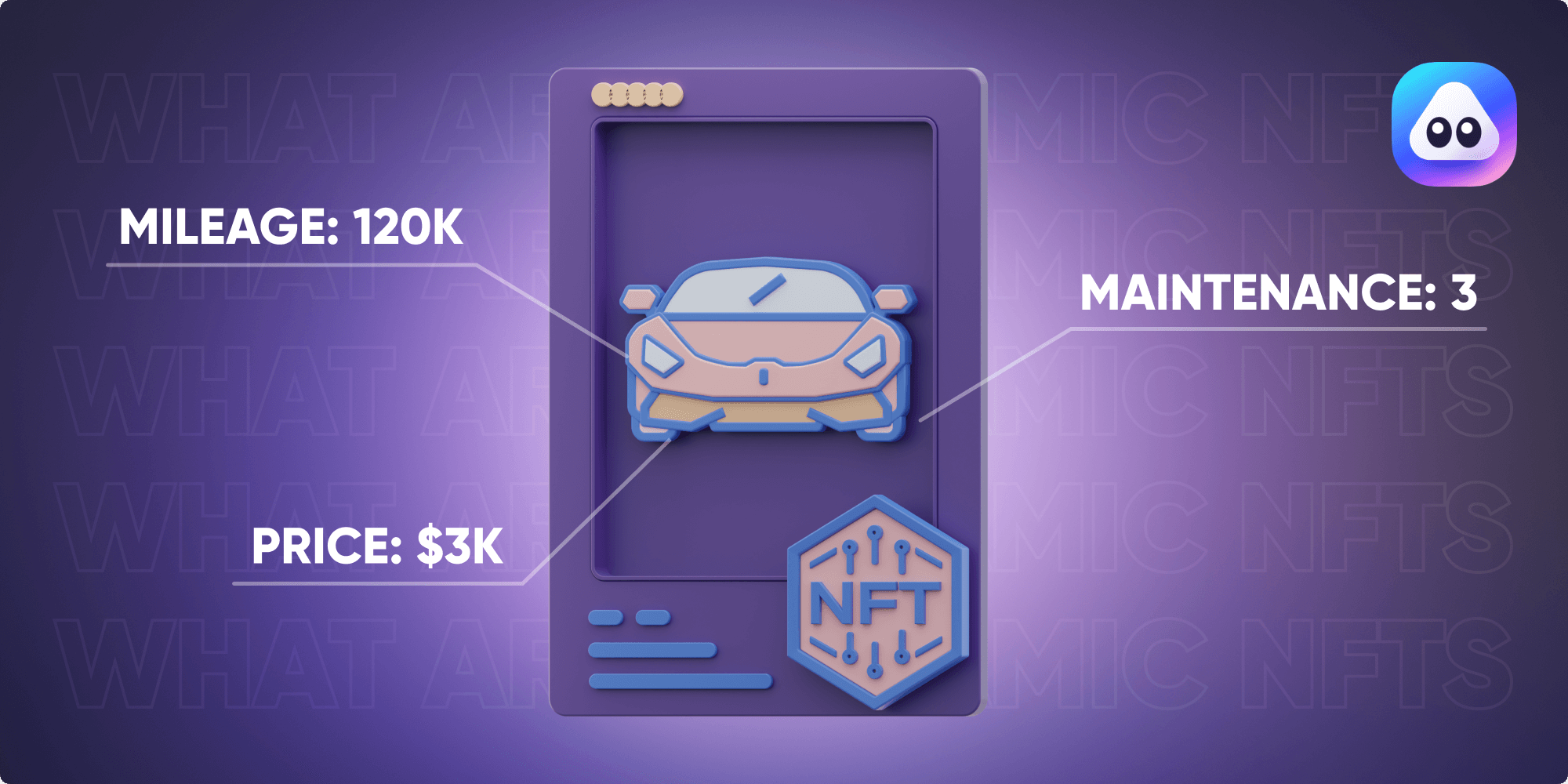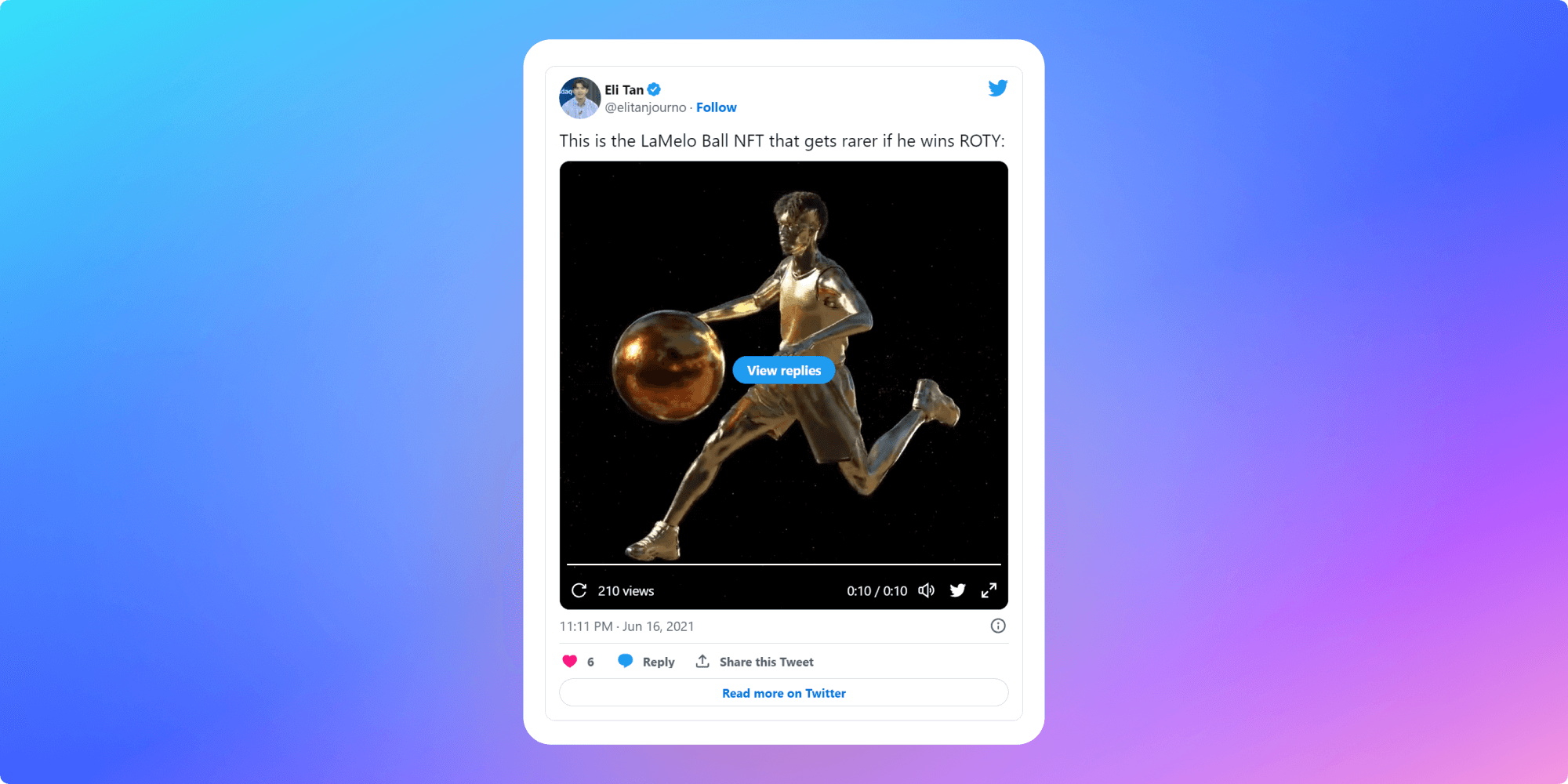Understanding Dynamic NFTs: Use Cases and Examples
Discover the world of dynamic NFTs and learn how they work, their benefits, and their use cases.
April 13, 2023

As NFT technology continues to develop and gain more adoption, new types and use cases for NFTs are emerging. One of the most exciting recent developments is the rise of dynamic NFTs, or dNFTs, which bring a new level of interactivity and functionality to digital assets. While static NFTs have been around for a while, dynamic NFTs are now in the spotlight and sparking exciting discussions within the NFT community.
Let's explore the concept of dynamic NFTs, how they work, their use cases, and why they may represent the future of non-fungible tokens.
What are dynamic NFTs (dNFTs)?
Dynamic NFTs, also known as dNFTs, are a new type of non-fungible token that incorporates programmable and interactive features, enabling the creation of digital assets that can change and evolve over time. dNFTs allow for updates and changes to be made to the underlying data without changing the unique ID of the NFT. This is possible through a smart contract that can automatically update the metadata associated with the NFT in response to specific conditions or user interactions.
A dynamic NFT can respond to external parameters or conditions such as user behavior, real-time market prices, time, weather, or other environmental data. For example, Pearpop's dynamic NFTs allow creators to mint NFTs of their social media posts on the Solana blockchain. The NFT's rank increases when the post gains popularity, using metadata such as comments, shares, and likes.
To understand dynamic NFTs, let's take a simple example. Imagine an NFT that represents a car. A static NFT would only represent the car as it is, without any additional functionality. However, a dynamic NFT could be programmed to reflect the car's current mileage, maintenance history, and even the current market value. This added functionality makes the NFT more valuable as it provides additional data and insights unavailable in a static NFT.

What are the Limitations of static NFTs?
Static NFTs have revolutionized the world of digital art, providing a way for artists to establish ownership and prevent illegal copying of their original works. However, static NFTs have limitations that can hinder their usefulness in certain scenarios. Here are some of the limitations of static NFTs in digital art and beyond:
- Fixed properties: Static NFTs are fixed and represent a single version of a digital asset, limiting their ability to respond to changing conditions or parameters. This means that the metadata associated with the NFT, such as its description or image, cannot be updated once it is placed on the blockchain.
- Lack of interactivity: Static NFTs cannot be programmed to respond to user interactions or external conditions. This limits their potential use cases and applications, particularly in gaming and other interactive environments where dynamic behavior is essential.
- Limited versatility: While static NFTs have proven useful in the world of digital art, their fixed properties make them less useful for digitizing other assets, such as real estate papers or patents. These types of assets require a more versatile and programmable approach, which is where dynamic NFTs come in.
Both static NFTs and dynamic NFTs have unique properties and can be used in various applications, depending on the specific needs and requirements of the use case. However, Dynamic NFTs offer a solution to the limitations of traditional static NFTs, making them useful for various applications, such as:
- Tokenizing real-world assets that may have changing values or ownership
- Creating video games with evolving game elements or storylines
- Developing fantasy sports leagues on the blockchain where player statistics and rankings change over time
- Recording ownership and provenance of physical art pieces that may be updated with new exhibitions or sales records
- Storing medical records that need to be updated over time
How do dynamic NFTs work?
Dynamic NFTs operate on the same progressive blockchain technology that underpins traditional static NFTs. However, dynamic NFTs have rules determining how they can evolve or change over time. These rules are encoded within smart contracts, which automate functions like changing the appearance, animations, or behavior of the NFT based on specific circumstances.
Moreover, dynamic NFTs differ from traditional NFTs in that they use the ERC-1155 token standard. While static NFTs are typically created using the ERC-721 token standard, dynamic NFTs use the ERC-1155 standard, which allows for storing data in a format that can be edited if needed, making them "semi-fungible."
Using oracles, dynamic NFTs can become more than static representations of digital assets. They can become interactive and responsive, allowing new use cases and applications. When an oracle sends external data to the smart contract, it triggers a change in a dynamic NFT, and the metadata of the NFT is updated. As a result, the appearance and other characteristics of the NFT will also be updated. Smart contracts also dictate how dynamic NFTs can be bought, sold, and traded and how royalties are distributed to their creators.
To interact with dynamic NFTs, users need a crypto wallet that supports smart contracts. Users can collect, sell, or trade NFTs on NFT marketplaces or use them in decentralized applications (DApps) that support dynamic NFT features.
What are the benefits of dynamic NFTs?
Dynamic NFTs offer several benefits, including:
- Interactivity: Their flexibility and ability to change make them more engaging and exciting for collectors and audiences while opening up new possibilities for creative expression.
- Programmability: Creators can define rules for how the NFT should behave, providing a high level of automation and control and enabling new use cases and applications in various industries.
- Versatility: Dynamic NFTs can be used in a wide range of services beyond digital art, such as in gaming, social networks, and others. Their versatility opens up new possibilities for developers and creators to innovate and create new immersive user experiences.
- New revenue streams: Dynamic NFTs provide an exciting long-term source of income for creators since they can earn royalties on the ongoing use or interaction with their NFTs.
Use cases for dynamic NFTs
Dynamic NFTs have numerous potential use cases. Here are some of the most exciting ones:
1. Gaming
Gaming is one of the most significant use cases for NFTs, and dynamic NFTs could be used to represent in-game items that change based on the player's progress or achievements. For example, a sword in a game could start off as a basic weapon but become more powerful as the player levels up.
2. Real Estate
A dynamic NFT could represent property and be programmed to update its value based on changes in the real estate market. This would allow for more accurate and up-to-date valuations of properties, making it easier for buyers and sellers to negotiate deals.
3. Collectibles
Collectibles are already a popular use case for NFTs, but dynamic NFTs could take it even further. A dynamic NFT could represent a rare item that changes based on the time of day or the weather conditions, making it even more unique and valuable. This would create new opportunities for collectors and investors to own rare and dynamic assets.
4. Digital Art
A dynamic NFT could represent a piece of digital art that changes based on the time of day or the viewer's location. This would create a new level of interactivity and engagement, making digital art even more valuable and exciting.
Examples of dynamic NFTs
- LaMelo Ball, a professional basketball player, has released eight dynamic NFTs that track his different stats, like rebounds and assists. These NFTs change based on his game statistics, and holders can receive unique benefits depending on his performance. For example, if he gets 10 assists in a game, the NFT could change to a different background color. One of the NFTs, the Gold Change NFT, was conditional upon LaMelo winning Rookie of the Year; when he did, the NFT changed to a different image entirely.

- Regenerative Resources (RRC) is another example of a dynamic NFT. RRC, an ecosystem services company, released five Short Film NFTs created by famous artists in December 2021. The money generated from the sales will be used to plant 100 million mangroves. The first frame of each Short Film NFT is displayed at first and, when bought or sold, the short film is shown frame by frame until the NFT holder can see the entire film.

Conclusion
Dynamic NFTs are the future of non-fungible tokens. While static NFTs have limitations, dynamic NFTs provide endless possibilities for use cases, making them an exciting development within the NFT community.
Interested in joining the NFT revolution? Look no further than AirNFTs! As one of the leading NFT marketplaces on Binance Smart Chain (BSC), Polygon (MATIC), Fantom (FTM), and Ethereum (ETH), we offer a personalized experience for minting and trading NFTs. While we don't yet support dynamic NFTs, our platform provides unparalleled exposure to the NFT market. With transaction fees under a dollar, you can easily start making money on primary and secondary sales while earning passive income.
